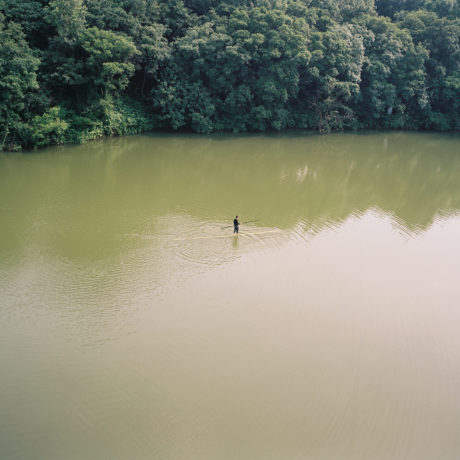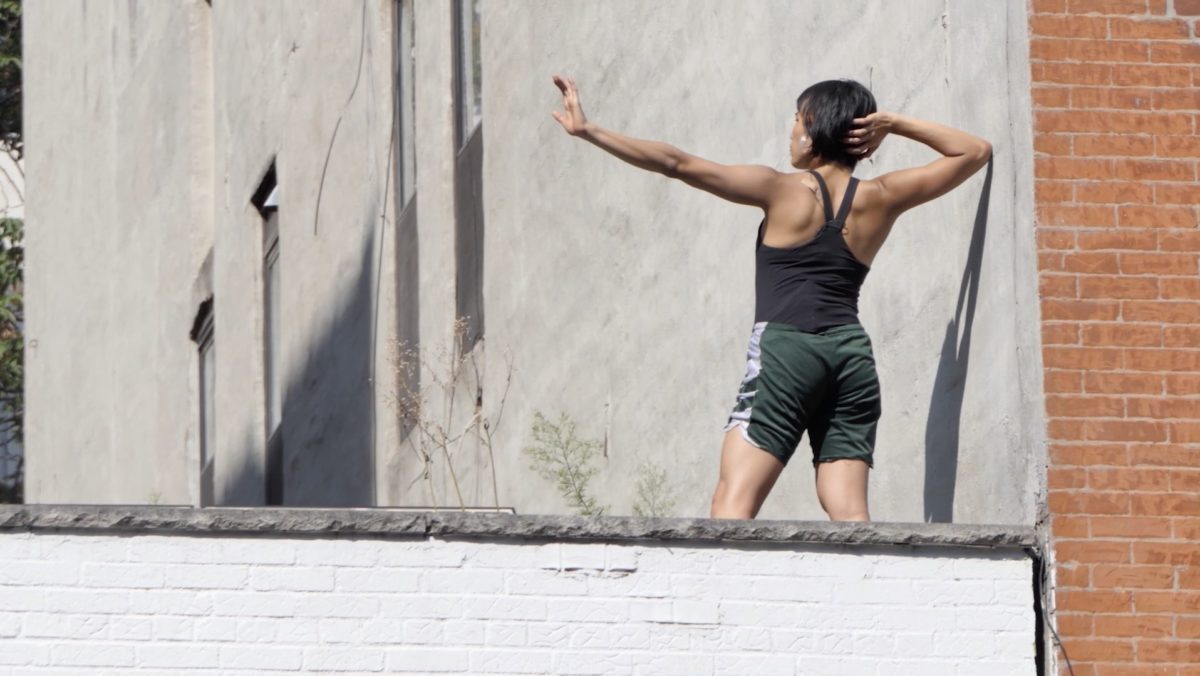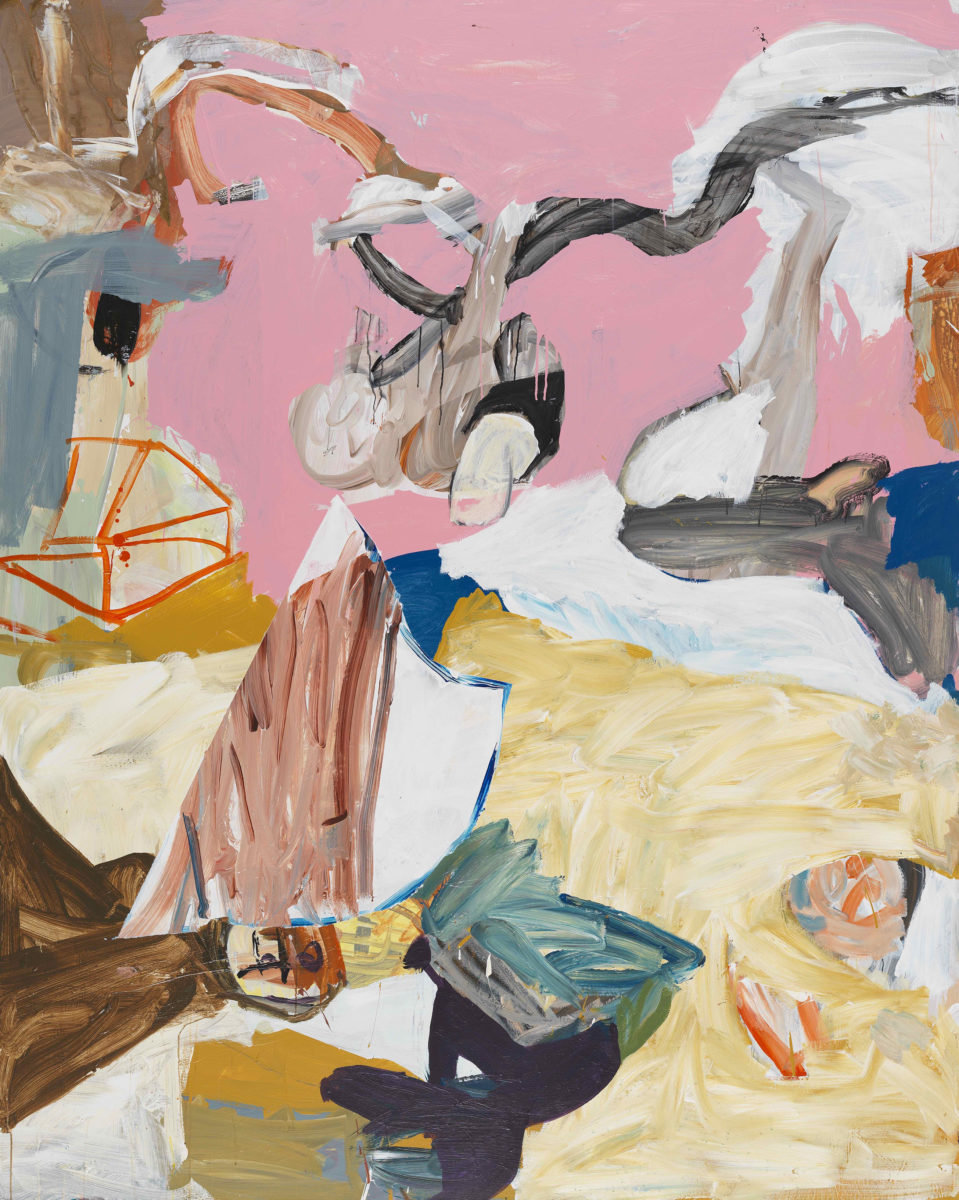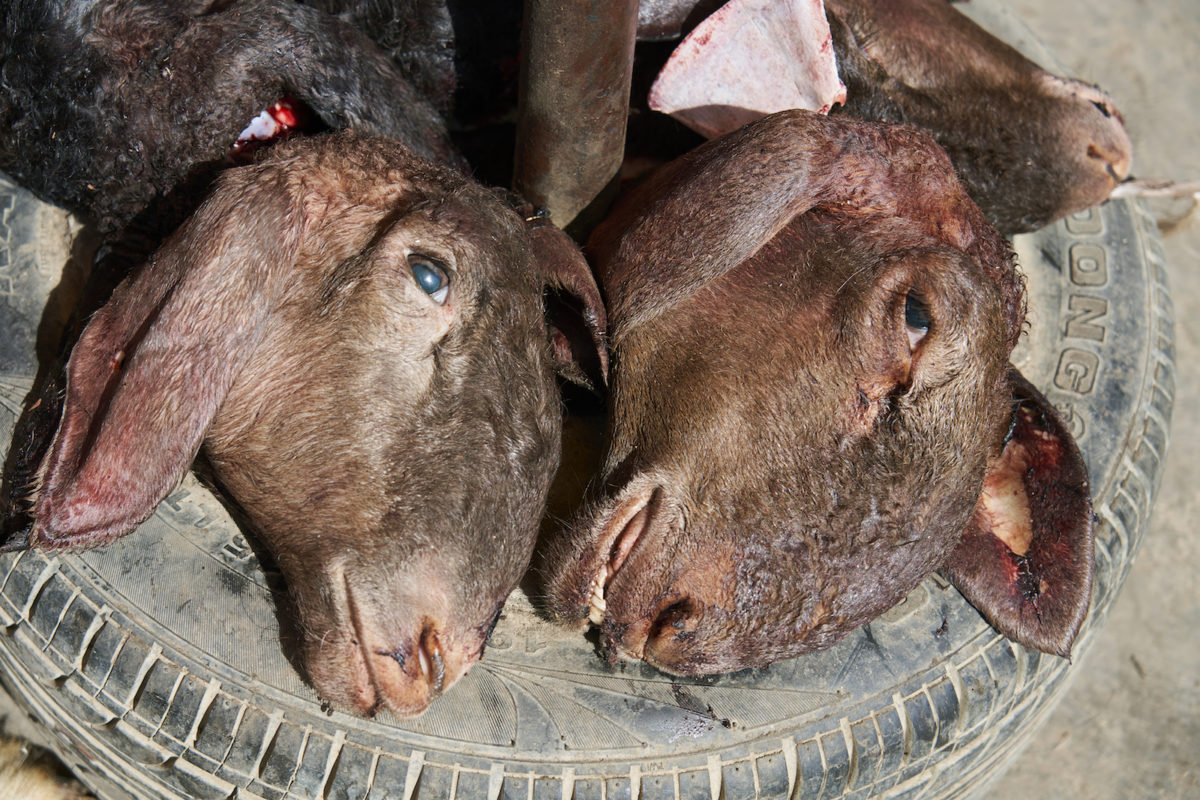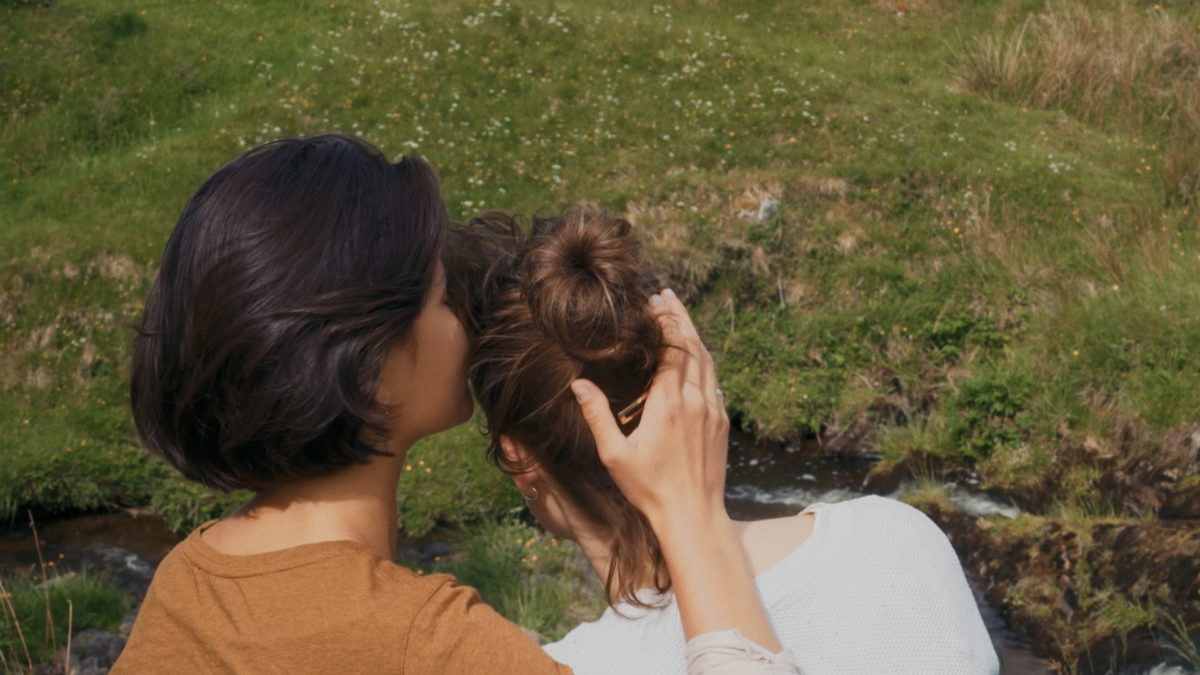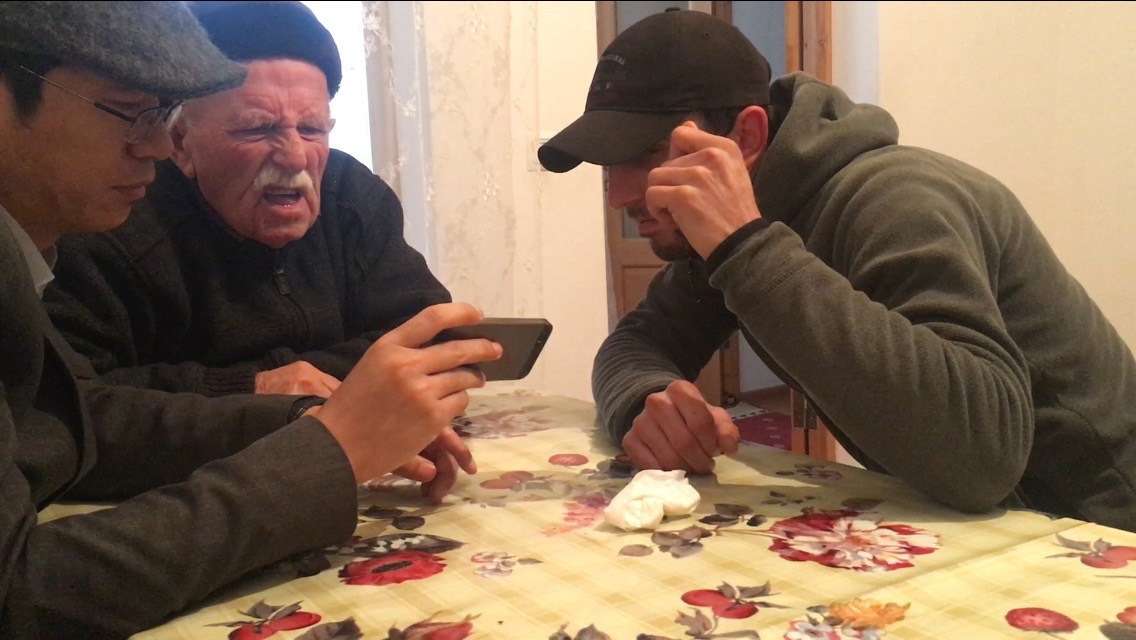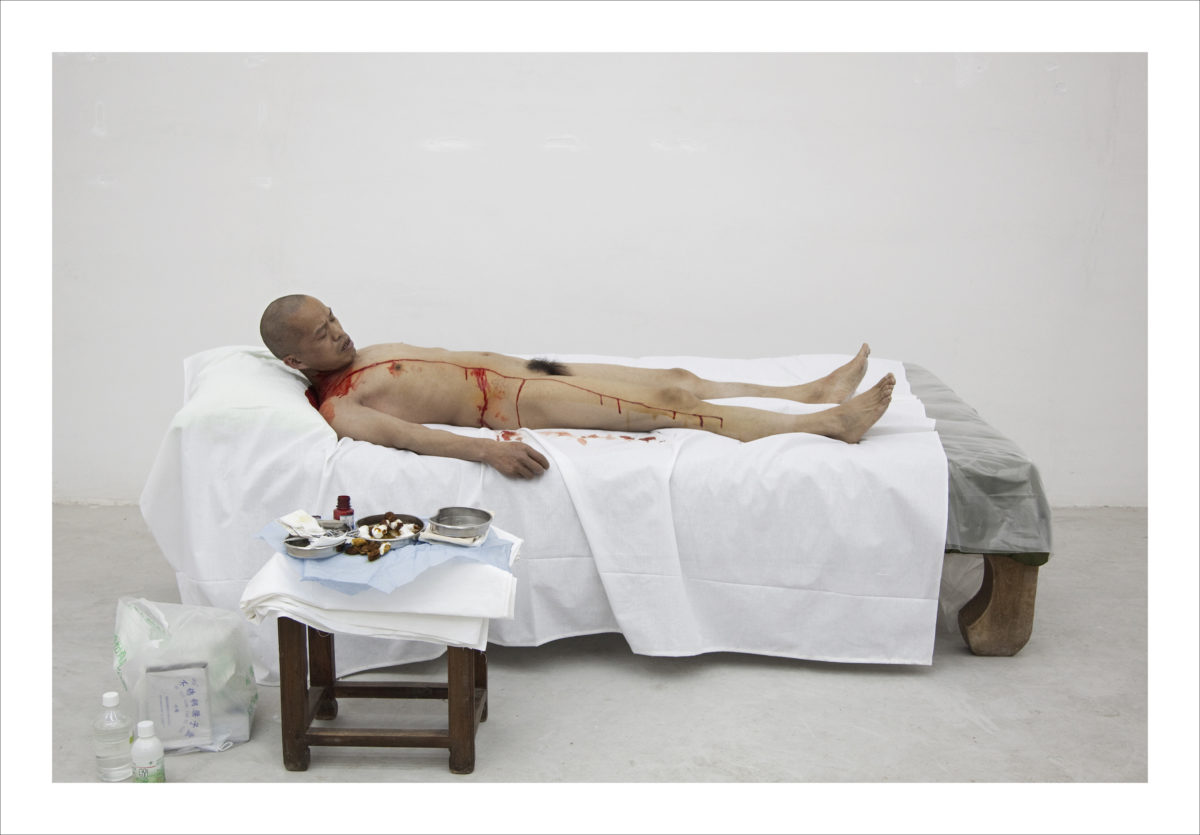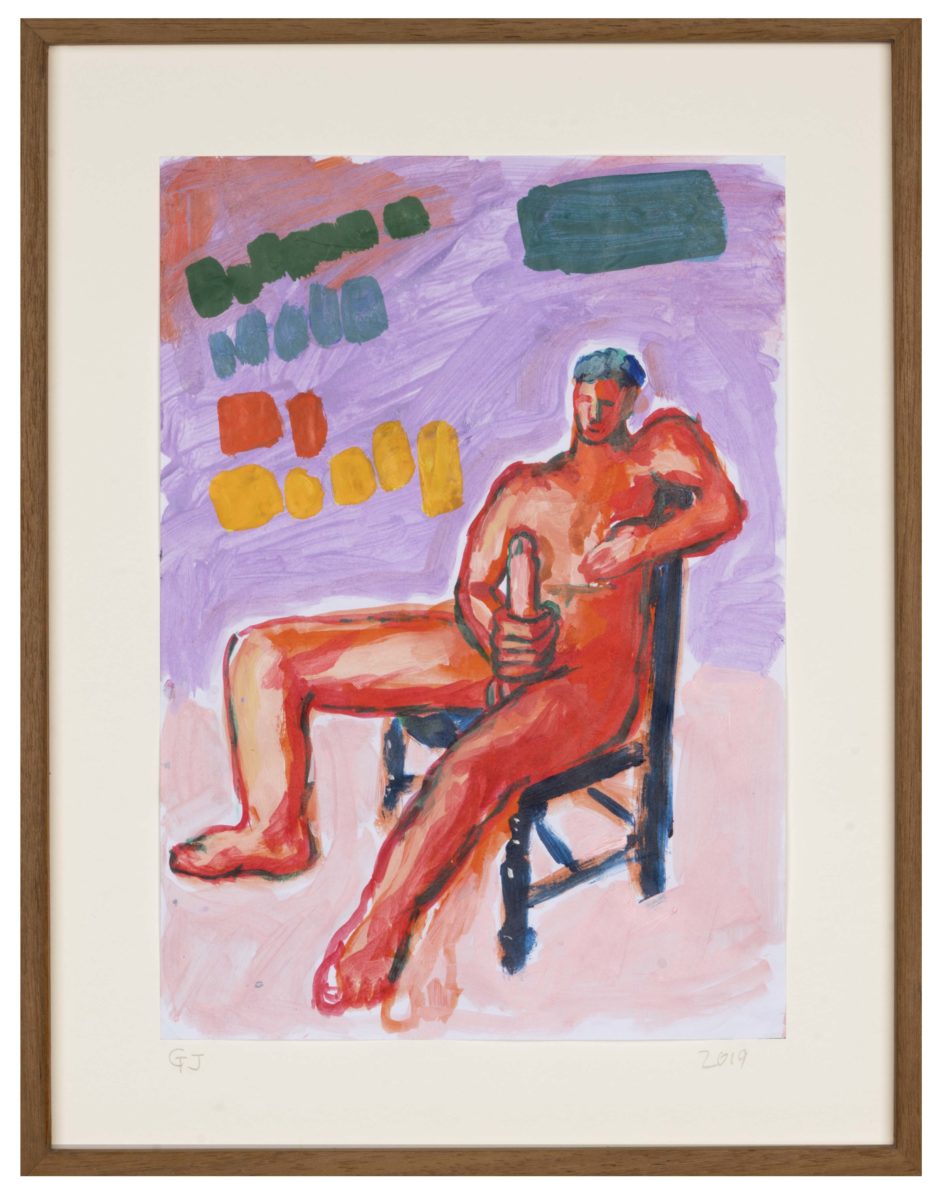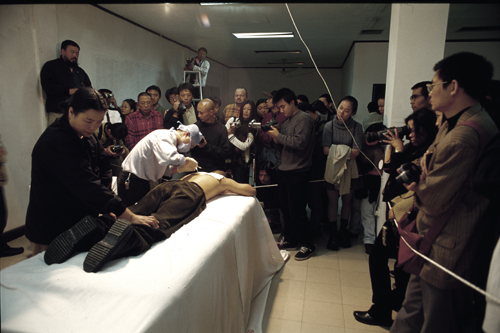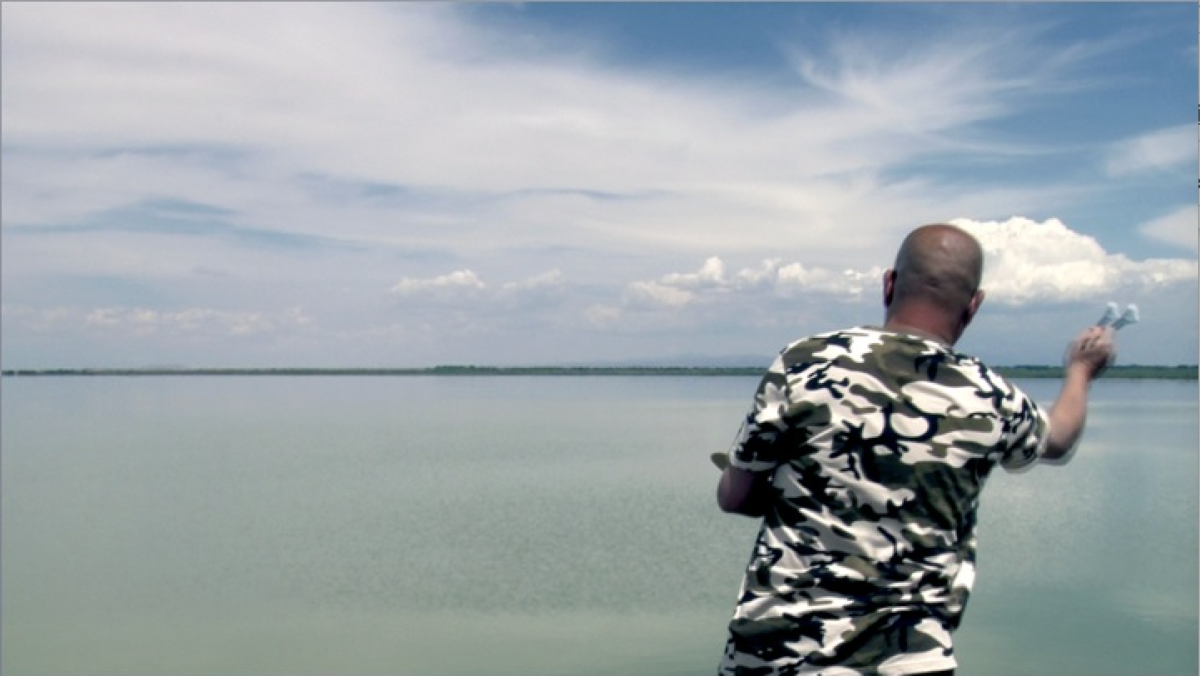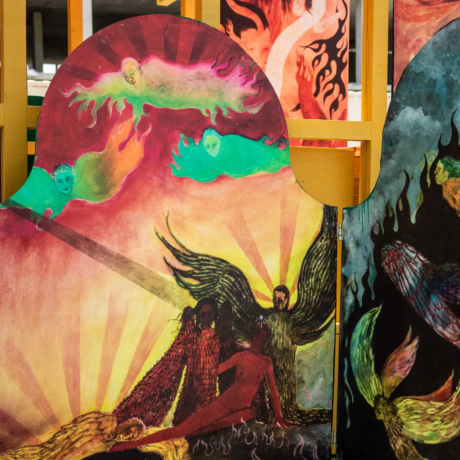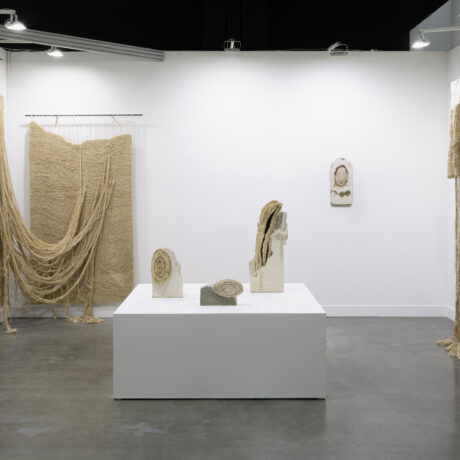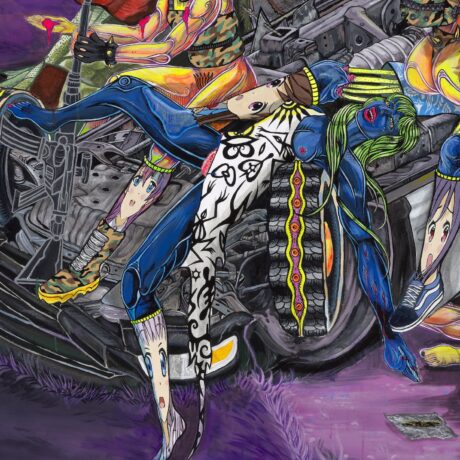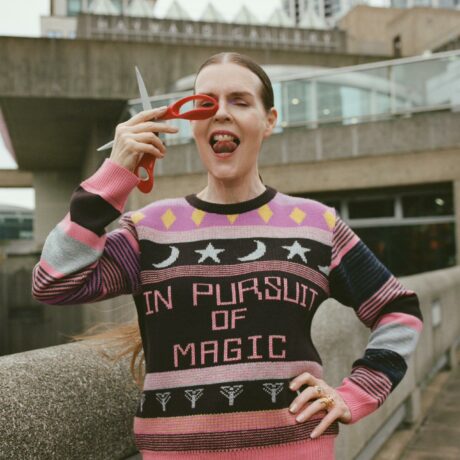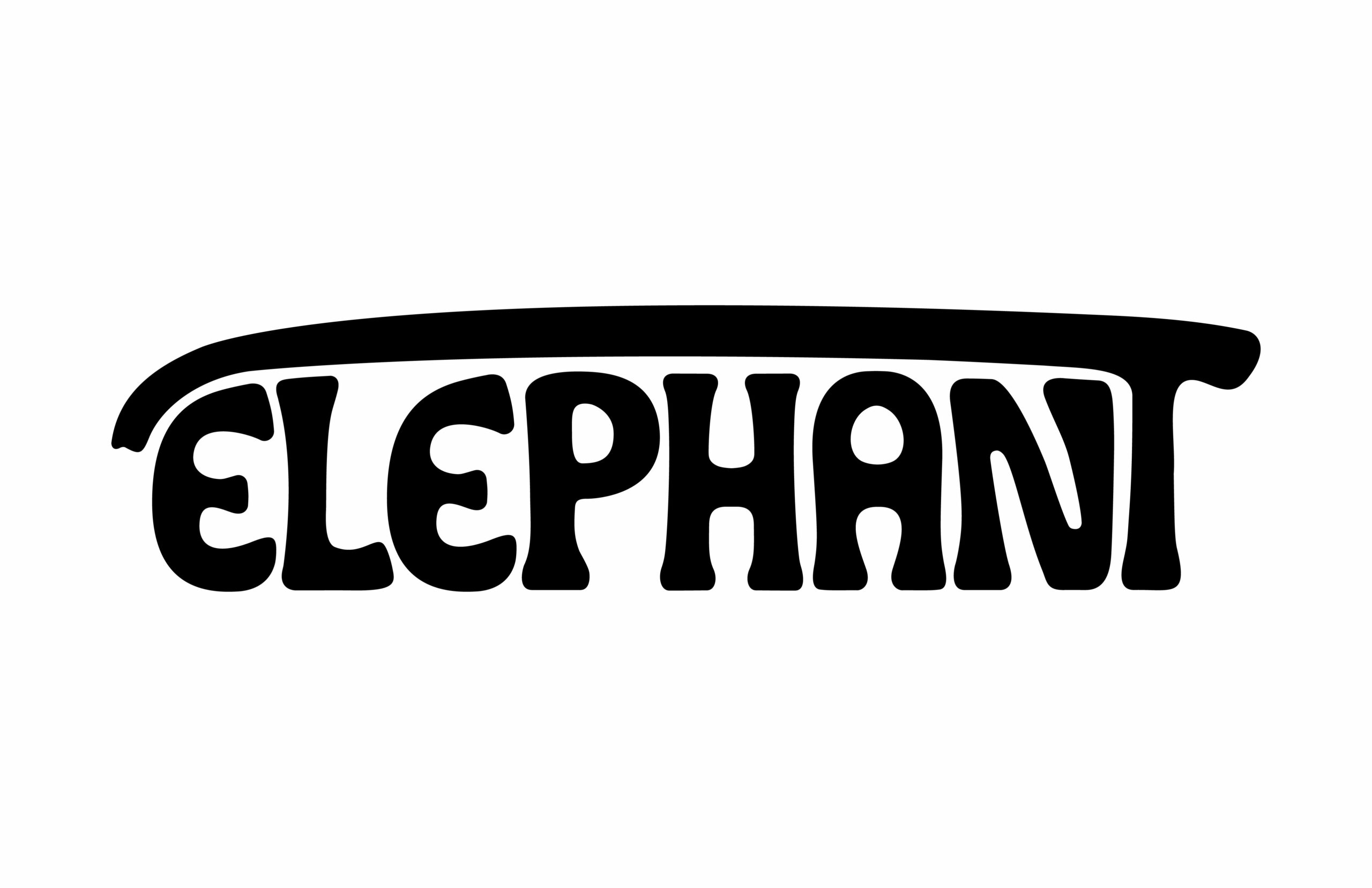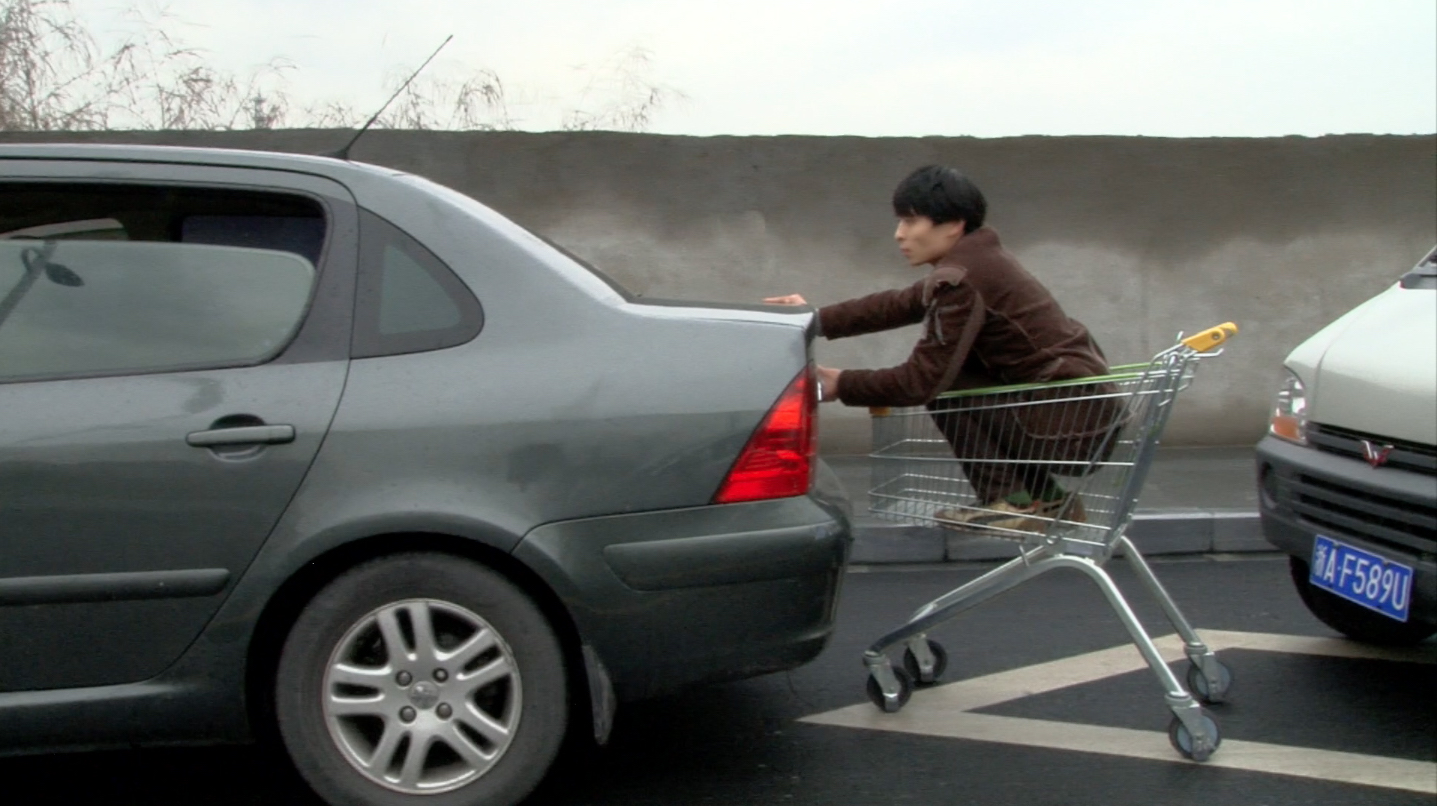
In 2010, the artist Tang Dixin threw himself under a metro train in Shanghai. As the moving vehicle rolled over his body, he had it all on camera. The dangerous performance, titled Act of God, made it into the news, provoking fierce debate and anger. In the context of China’s notorious surveillance society, extreme and illegal acts are sometimes a necessary strategy for resistance. In a new exhibition at Eli Klein Gallery, curated by Lu Mingjun (a professor in the Department of Art Studies at Sichuan University), thirteen artists present works made between 2010 and 2020, demonstrating just how far some Chinese artists will go to challenge the palpable power structures in their home country, pushing their own endurance and that of the spectator.
“The artist cut himself from neck to thigh, a metre-long wound to represent the tension between individual agency and the state in China”
A series of paintings by Gong Jian shows men sitting on chairs masturbating, against amusingly generic backgrounds. There’s a slapstick video work by Li Ming from 2015, in which the artist attempts to hold on to a moving car while riding behind on a shopping trolley—he inevitably falls off and ends up on his arse. The earliest work in the exhibition, and perhaps the most intense, is a video documentation of He Yungchang’s One Meter of Democracy, 2010. For this, the artist lay naked on a bed in front of an audience and asked whether he should cut himself. There was a majority vote in favour, and the artist cut himself from neck to thigh, a metre-long wound to represent the tension between individual agency and the state in China. The work, and the exhibition as a whole, seems to pose the question: What does it take to be an individual? It’s not for the pusillanimous.
